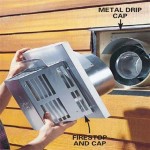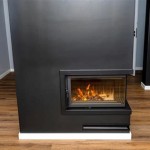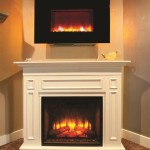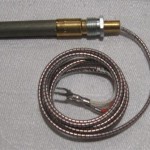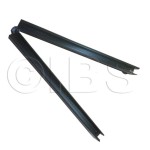Outdoor Deck Fireplace: Extending Your Living Space with Warmth and Ambiance
An outdoor deck fireplace represents a significant upgrade to any outdoor living space, transforming a simple deck into a cozy and inviting retreat. This addition not only extends the usability of the deck into cooler months but also adds substantial aesthetic appeal and value to the property. Careful consideration must be given to design, safety, and local regulations before installing an outdoor deck fireplace.
The presence of a fireplace creates a focal point, encouraging gatherings and fostering a sense of relaxation. It can serve as the centerpiece of a design scheme, influencing the furniture selection, landscaping, and overall ambiance of the deck. Furthermore, the warmth provided by the fireplace allows for extended enjoyment of the outdoor space, particularly during evenings and seasons where cooler temperatures would otherwise limit its use.
Several factors contribute to the growing popularity of outdoor deck fireplaces. Firstly, homeowners are increasingly seeking ways to enhance their outdoor living experiences and create spaces that are both functional and aesthetically pleasing. Secondly, the availability of various fireplace designs and fuel options allows for customization to suit individual preferences and budgetary constraints. Finally, advancements in fireplace technology have resulted in more efficient and environmentally friendly options, addressing concerns about emissions and fuel consumption.
Key Considerations Before Installation
Prior to embarking on the installation of an outdoor deck fireplace, a series of critical considerations must be addressed to ensure safety, compliance, and long-term satisfaction. These considerations encompass structural integrity, material selection, permit requirements, and proximity to combustible materials.
The structural integrity of the deck is paramount. Before installing a fireplace, a qualified structural engineer should assess the deck's load-bearing capacity to ensure it can safely support the added weight. A typical fireplace, even a smaller model, can weigh hundreds of pounds, and improper support can lead to structural damage or even collapse. Reinforcements may be necessary, particularly for older decks or those not originally designed to accommodate such a load. The base of the fireplace needs to be properly supported to distribute the weight evenly across the deck's framing.
Material selection is another crucial aspect. The fireplace itself, as well as any surrounding materials such as stonework or tiling, should be chosen for their durability and resistance to the elements. Materials like natural stone, brick, and concrete are commonly used for their aesthetic appeal and weather resistance. The choice of materials will influence the overall style of the fireplace and its longevity. Care should be taken to select materials that complement the existing deck and landscaping.
Compliance with local building codes and obtaining the necessary permits is essential. Before commencing any construction, it is important to contact the local building department to determine the specific requirements for outdoor fireplaces. These requirements may include restrictions on fuel type, chimney height, setback distances from property lines, and fire safety measures. Failure to obtain the required permits can result in fines and delays, and may even require the removal of the fireplace. Furthermore, adhering to building codes ensures that the fireplace is installed safely and in accordance with industry standards.
The proximity of the fireplace to combustible materials is a significant safety concern. A safe distance must be maintained between the fireplace and any flammable materials, such as wood siding, overhanging branches, or outdoor furniture. This distance will vary depending on the size and type of fireplace and the fuel being used. Generally, a minimum clearance of several feet is recommended. In addition, it is advisable to install a non-combustible barrier, such as a concrete pad or metal shield, around the base of the fireplace to protect the deck surface from heat and embers.
Types of Outdoor Deck Fireplaces
A variety of outdoor deck fireplaces are available, each offering distinct advantages and disadvantages in terms of cost, aesthetics, and functionality. The choice of fireplace type will depend on individual preferences, budget, and the physical characteristics of the deck.
Wood-burning fireplaces provide a classic aesthetic and the authentic ambiance of a real fire. They are often constructed from brick, stone, or concrete and can be customized to match the style of the deck. However, wood-burning fireplaces require a chimney for proper ventilation and can produce significant smoke and embers. They also necessitate a readily available supply of firewood and regular cleaning to remove ash and creosote, a flammable residue that can accumulate in the chimney. Local regulations may restrict the use of wood-burning fireplaces due to air quality concerns.
Gas fireplaces offer convenience and ease of use. They can be fueled by either propane or natural gas and are typically equipped with a push-button ignition for instant lighting. Gas fireplaces produce less smoke and embers than wood-burning fireplaces and require minimal maintenance. They can be installed with a variety of decorative features, such as ceramic logs or glass stones, to create a realistic flame effect. However, gas fireplaces require a gas line connection, which may necessitate professional installation. The cost of operating a gas fireplace can also vary depending on the price of gas.
Electric fireplaces are the simplest and most versatile option for outdoor decks. They do not require a chimney or gas line and can be easily installed by plugging them into a standard electrical outlet. Electric fireplaces produce no emissions and are relatively inexpensive to operate. They are available in a wide range of styles and sizes, from freestanding models to wall-mounted units. However, electric fireplaces do not provide the same level of heat as wood-burning or gas fireplaces and may not be suitable for larger decks or colder climates.
Chiminea fireplaces are freestanding, bulbous clay or metal fireplaces that are popular for their rustic charm. Their distinctive design directs smoke upwards and away from the seating area. Chimineas are relatively inexpensive and easy to move, making them a good option for smaller decks or those with limited space. However, chimineas typically produce less heat than other types of fireplaces and may not be as durable in harsh weather conditions. They also require careful attention to safety due to the open flame.
Safety and Maintenance of Outdoor Deck Fireplaces
Ensuring the safe operation and longevity of an outdoor deck fireplace requires diligent adherence to safety guidelines and regular maintenance. These practices minimize the risk of fire hazards and prolong the lifespan of the fireplace.
Fire safety is of paramount importance. A fire extinguisher should always be readily accessible near the fireplace. It is advisable to use a Class ABC fire extinguisher, which is effective against a variety of fire types. Clear the area around the fireplace of any flammable materials, such as dry leaves, paper, or flammable liquids. Never leave a burning fireplace unattended, and supervise children and pets closely. Ensure that the fireplace is completely extinguished before leaving the area or going to bed.
Regular cleaning is essential to maintain the efficiency and safety of the fireplace. Wood-burning fireplaces should be cleaned regularly to remove ash and creosote buildup. Creosote is a highly flammable substance that can accumulate in the chimney and flue, increasing the risk of a chimney fire. A professional chimney sweep should inspect and clean the chimney at least once a year. Gas fireplaces should be inspected annually by a qualified technician to ensure that the gas lines and burners are functioning properly. Electric fireplaces require minimal maintenance but should be kept clean and free of dust.
Protecting the fireplace from the elements can extend its lifespan. When the fireplace is not in use, cover it with a waterproof cover to protect it from rain, snow, and sun damage. This will help prevent rust, corrosion, and other forms of deterioration. For fireplaces made of stone or brick, consider applying a sealant to protect the surface from moisture absorption. Proper storage during the off-season can also help prolong the lifespan of the fireplace.
Regular inspection and repair are crucial for identifying and addressing potential problems. Inspect the fireplace regularly for cracks, leaks, or other signs of damage. Repair any damage promptly to prevent it from worsening. For gas fireplaces, check the gas lines and connections for leaks. If you suspect a gas leak, immediately shut off the gas supply and contact a qualified technician. Replacing worn or damaged parts can help maintain the fireplace's performance and safety.
Following these guidelines promotes a safe and enjoyable outdoor experience with an outdoor deck fireplace.

Covered Deck With Fireplace How To Make One 2024

25 Outdoor Fireplace Ideas Fireplaces Fire Pits

30 Outdoor Fireplace Ideas Cozy Fireplaces

Custom Decks Adding A Fireplace To Your Outdoor Living Space

Home Is Where The Hearth With An Outdoor Fireplace Rockhaven Homes

7 Hot Looks For Your Outdoor Fireplace

How To Build An Outdoor Fireplace Step By Guide Buildwithroman

Deck Fireplace Ideas And Options

Deck Fireplace Designs Amazing Decks

Outdoor Fire Pits And Fireplaces Katy Houston Greater Areas
Related Posts

